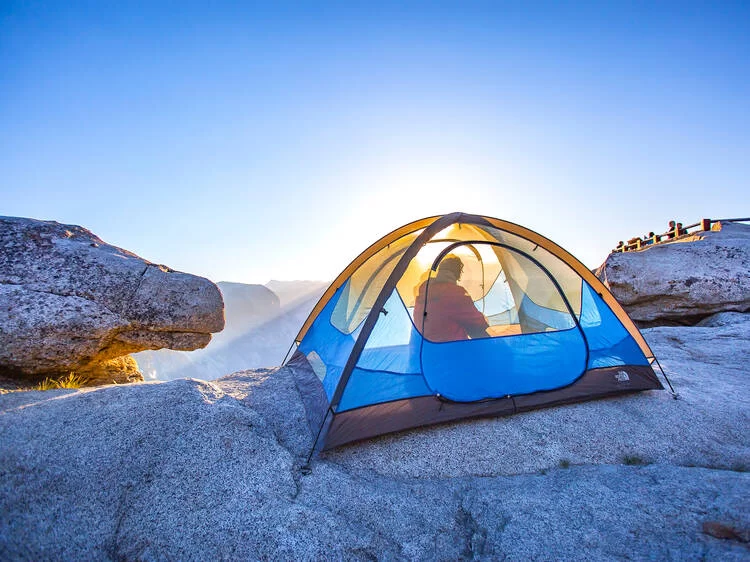- Exploring-Free-Camping-Sites-in-the-US
- Understanding-Dispersed-Camping-and-Public-Camping-Grounds
- Real-Experiences-from-Free-Camping-Adventurers
- Tips-for-Successful-Free-Camping-Trips
- Where-to-Find-Camping-Gear-and-Services
1. Exploring Free Camping Sites in the US
Camping is a timeless way to connect with nature, unwind, and enjoy the great outdoors. However, the cost of campsites can sometimes be a barrier for many outdoor enthusiasts. Fortunately, the US offers a wealth of free camping sites scattered across national forests, Bureau of Land Management (BLM) lands, and other public areas. These no-cost camping spots allow adventurers to set up camp without worrying about fees, making camping accessible to all budgets.
From the expansive forests of the Pacific Northwest to the rugged landscapes of the Southwest, free camping sites provide unique opportunities to experience untouched nature. Many of these areas support dispersed camping, where campers can pitch tents away from developed campgrounds, offering solitude and a more primitive experience.
Understanding the variety of free camping options is essential for anyone planning a trip. While some free sites offer basic amenities like fire rings and vault toilets, others require full self-sufficiency. This diversity caters to all types of campers, whether you’re seeking a short weekend getaway or an extended wilderness retreat.
1.1 Why Choose Free Camping?
Free camping is more than just cost-saving. It’s an invitation to explore less-traveled paths and embrace a raw, natural experience. Without the constraints of crowded campgrounds or reservation systems, campers can enjoy flexibility and spontaneity, deciding on-the-go where to set up camp.
Additionally, free camping often leads to encounters with wildlife, starry night skies far from city lights, and a deeper appreciation for conservation efforts. It’s a way to unplug, recharge, and immerse oneself in the beauty of America’s vast natural landscapes.
2. Understanding Dispersed Camping and Public Camping Grounds
Many free camping sites fall under the category of dispersed camping, especially on lands managed by the US Forest Service and BLM. Dispersed camping means camping outside of designated campgrounds, typically without facilities. Knowing the rules and best practices is crucial to protect these natural areas and ensure a positive experience.
2.1 What Is Dispersed Camping?
Dispersed camping allows you to set up camp in undeveloped areas, usually with few or no services. This means no running water, trash collection, or picnic tables. It requires careful planning and a commitment to Leave No Trace principles, including packing out all trash and minimizing environmental impact.
Dispersed sites are often located in remote, quiet spots that offer greater privacy compared to busy campgrounds. This can enhance the camping experience for those looking to truly escape.
2.2 Free Public Camping Grounds
Some public lands offer designated campgrounds that are free to use or have minimal fees. These spots may include basic amenities such as fire pits or toilets. They are a good middle ground between dispersed camping and developed sites, providing some conveniences while maintaining the budget-friendly aspect.
3. Real Experiences from Free Camping Adventurers
Take the story of Sarah and Tom, a couple from Colorado who embarked on a month-long road trip in search of free camping sites in the US. They discovered a remote site near the Sierra National Forest, where they camped under towering pines and woke to the sounds of birdsong and distant waterfalls. The lack of crowds and the pristine setting made their trip unforgettable.
Similarly, a group of friends shared their experience in Arizona’s BLM lands, describing how dispersed camping allowed them to witness stunning desert sunsets and star-filled nights without interruption. Their adventure highlighted how free camping can foster strong bonds and memorable moments.
These stories are not isolated—countless campers have found freedom and joy through free camping, often returning year after year to their favorite secret spots.
4. Tips for Successful Free Camping Trips
Camping for free requires a bit more preparation than staying in developed campgrounds. Here are some essential tips to help you make the most of your experience:
4.1 Research and Planning
Before heading out, research the rules of the area where you plan to camp. Some public lands may have restrictions on campfires, stay duration, or group sizes. Tools like the USDA Forest Service website and BLM maps are invaluable for locating legal free camping areas.
4.2 Pack Smart and Be Self-Sufficient
Since amenities are often absent, bring enough water, food, and gear to support yourself comfortably. Portable water filters, lightweight stoves, and reliable tents can make a big difference.
4.3 Practice Leave No Trace
Respecting nature is vital. Always clean up after yourself, avoid disturbing wildlife, and minimize your impact on the land to ensure these free camping sites remain pristine for future visitors.
5. Where to Find Camping Gear and Services
For those new to free camping or looking to upgrade their gear, Pine Cliff Resort offers a curated selection of camping equipment and expert advice. Whether you need sturdy tents, sleeping bags, or portable cooking tools, Pine Cliff Resort is a trusted source that caters to all your outdoor needs, ensuring you’re well-prepared for your next adventure.
In addition, Pine Cliff Resort provides insights and recommendations for finding the best free camping sites in the US, helping campers plan trips that are safe, enjoyable, and budget-friendly.







